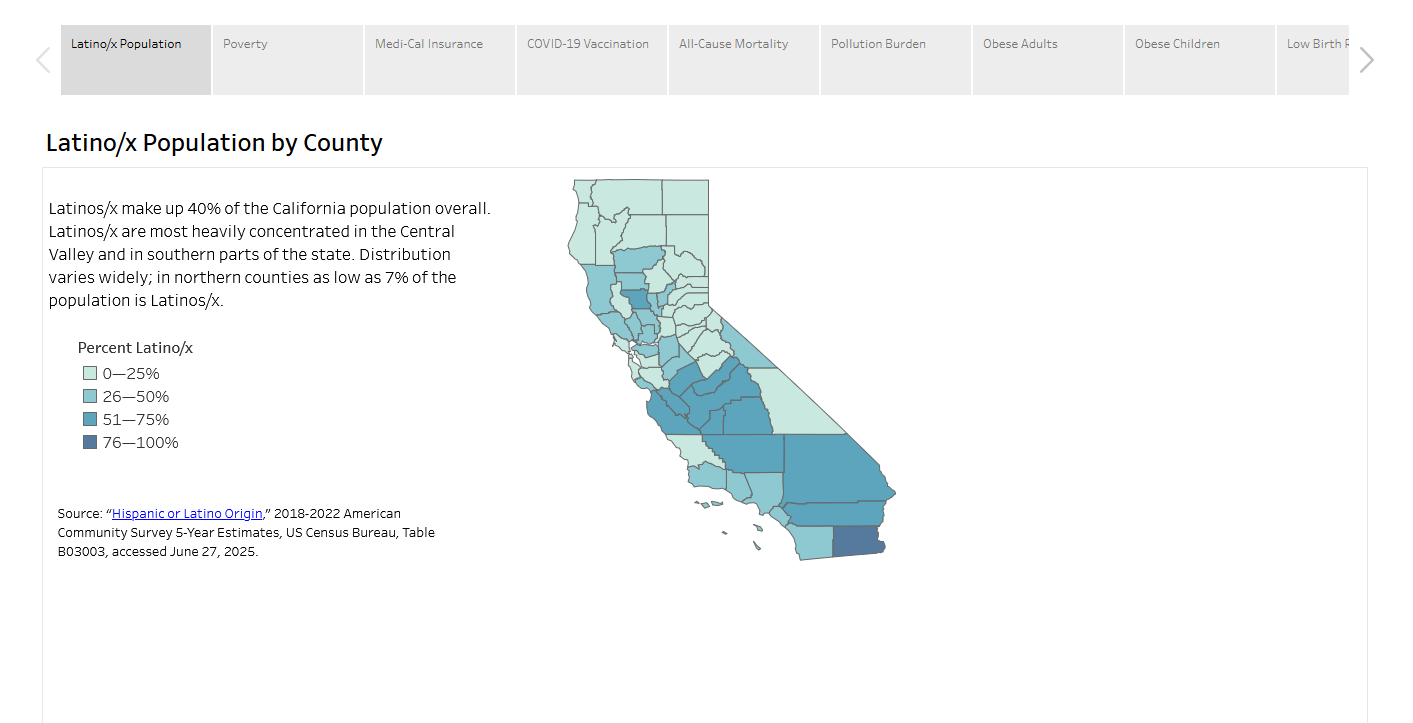View the Report
Jump to All Downloads & LinksCommunity Health Centers’ Journey Through the Pandemic
This collection of publications highlights the financial challenges faced by California’s FQHCs during the COVID-19 pandemic – and how they adapted to keep serving patients. It also highlights policy changes that are needed to stabilize FQHCs so they can continue to play their vital role in providing care to Californians with low incomes.
Overview
As a follow-up to the analysis of the financial impact of COVID-19 on California’s Federally Qualified Health Centers,1 Capital Link evaluated whether the size, number of sites, payer mix, service mix, or location may have created a differential financial impact on specific groups of centers. The findings of this analysis are summarized below.
Based on these findings, there is significant risk that the health center system in California will be greatly weakened in a postpandemic future, absent additional funding support — especially for the largest centers. While federal support is on the horizon, it will be important to pay close attention to the financial health of these health centers if California hopes to preserve the integrity of the safety net.
The centers that had the most capacity prepandemic, and those that serve 68% of all patients and 69% of Medi-Cal patients overall, face the most financial risk. They are on track to emerge from the pandemic in a significantly weaker financial position than before the pandemic, potentially curtailing their ability to “bounce back” to provide the range and volume of care they were previously providing.
Smaller centers may fare somewhat better, given they entered 2021 in a stronger financial position — however, given the unknown course of the pandemic, they too may experience significant losses going forward without additional resources to offset COVID-19-related costs and losses through at least 2021. It is important to note that relief funds received through December 2020 were intended to cover costs well into 2021 — so any “surpluses” experienced by some centers through December 2020 may ultimately be used to cover pandemic-related losses in 2021.
Whether measured by revenue size, number of patients, or number of sites, the largest health centers bore the brunt of the financial losses between April and December 2020.
- By revenue size: The top quartile,2 with revenues in excess of $36.7 million in 2019, absorbed 95% of the losses, totaling approximately $557 million (an 11% operating loss), while the lowest two quartiles, with revenues below $16 million, had combined surpluses totaling $64 million (an 8% operating gain).
- By number of patients: The top quartile, with more than 31,000 patients in 2019, absorbed 97% of losses, totaling approximately $547 million (a 12% loss), while the lowest quartile, with fewer than 6,500 patients, had estimated surpluses totaling $41 million (a 17% gain).
- By number of sites: The top quartile, with 14–52 sites, absorbed 91% of losses, totaling $506 million (a 12% loss), while those with three or fewer sites had collective surpluses of $32 million (a 5% gain).
Centers that serve the highest proportion of Medi-Cal patients sustained almost all of the financial losses, totaling an estimated $549 million.
- 96% of the losses were concentrated in the top quartile — those centers serving between 20,266 and 243,421 Medi-Cal patients in 2019. This group sustained average losses of $145 per patient, based on 2019 total patients.
Service Mix
Centers with the most diversified service mix sustained the greatest financial losses.
- The quartile with the highest losses also had the highest proportion of dental visits (13% in 2019) as compared to the quartile with the lowest losses or gains, for which dental visits were 1% of visits.
- The “high-loss quartile” also provided the highest proportion of enabling visits (4% vs. 1% in 2019) and the highest proportion of “other professional visits” (5% vs. 2%).
- Both groups provided an equal proportion of mental health visits (5% for each group in 2019).
Location
Regionally, the losses were more balanced, although the South and Central regions sustained the heaviest total losses and per patient losses.
- Losses were highest for centers in the South region, at $179 million in total and $150 per patient.
- Centers in the Central region collectively lost $163 million, or $101 per patient.
- Centers in the Sacramento Valley region were close behind, in terms of per patient losses, at $100 per patient.
- These three regions serve the highest concentrations of Medi-Cal patients at 70%, 66%, and 73% of all patients, respectively, in 2019.
Between urban and rural centers, financial losses were concentrated in urban centers; they bore 94% of total losses.
Why Were Losses Concentrated in the Largest Centers?
While there were some minor differences in average visit decline (which affects revenues) and the average percentage of visits conducted virtually, centers of all sizes and across all regions were fairly tightly clustered, with 19%–26% average visit decline and 49%–56% of all visits conducted virtually.
The two most important differentiating factors that appears to have financially disadvantaged the larger centers were prevalence of Paycheck Protection Program (PPP) loans and level of BPHC grant funding. In both instances, the dollar amount per patient greatly favored smaller centers.
- PPP: Given that many of the largest health centers were not eligible to apply for PPP funding, these centers sustained the largest financial losses. Only 42% of centers with revenues above $36.7 million (the top quartile) received a PPP loan, while 100% of centers in the bottom three quartiles received a PPP loan.
- BPHC grant funding: Bureau of Primary Health Care (BPHC) grant funding per patient averaged $153 per patient for the centers with the smallest revenue (lowest quartile), while the largest centers (top quartile) received an average of $44 per patient. This differential also held true when evaluating based on number of patients, number of sites, and number of Medi-Cal patients.
Methodology
The data analysis contained in this infographic was conducted by Capital Link, based on information from the following sources:
- FY19 audited financial statements of 192 California FQHCs (both Section 330s and Look-Alikes), collected by Capital Link.
- 2018 and 2019 Uniform Data System (UDS) reports submitted by 202 California FQHCs to the Health Resources and Services Administration (HRSA).
- HRSA’s Data Warehouse for the number of California FQHC sites and the amount of COVID-19 grants issued to each California FQHC.
- HRSA’s Health Center COVID-19 Survey, including weekly responses from health centers from April 4, 2020, through November 27, 2020.
- US Department of Health & Human Services (HHS) Data Warehouse for the amount of Provider Relief Fund (PRF) General Distribution issued to each California FQHC health center:
- General Distribution estimated at 2% of 2018 Net Patient Service Revenue.
- HHS Data Warehouse for the amount of each PRF Rural Distribution issued to each rural California FQHC health center:
- Rural Distribution based on FQHC site addresses mapped by RUCA codes 4, 5, 6, 7, 8, 9, and 10, with a fixed amount of $103,253 per rural site.
- FCC telehealth grants as published by the PCC on July 8, 2020.
- Small Business Administration (SBA) Paycheck Protection Program (PPP) loan amounts for each eligible California FQHC:
- Based on surveys of health centers in several states conducted by Capital Link and the National Association of Community Health Centers (NACHC) between April 13, 2020, and June 9, 2020, and:
- For survey nonrespondents, the SBA PPP loan amount was calculated for eligible health centers (those with 2019 UDS FTEs less than 450), from FY2019 Audited Financials: Salaries & Related Expenses, divided by 12 and multiplied by 2.5.
- If a health center’s FY19 audit was not available, the loan amount was calculated as follows: Total Revenues (from 2019 UDS) multiplied by the California FY19 median for Personnel-Related Expense as Percentage of Operating Revenue, as calculated from the FY19 audits. The result was then divided by 12 and multiplied by 2.5.
- Based on surveys of health centers in several states conducted by Capital Link and the National Association of Community Health Centers (NACHC) between April 13, 2020, and June 9, 2020, and:
- COVID-19-Related Expenses include costs of purchasing personal protective equipment (PPE), telehealth implementation, and facility modifications related to COVID-19. They were estimated on a per-patient per-month basis, based on data collected from health centers in multiple states by NACHC and Capital Link between March and October 2020.
California Counties Included in Regions
| Region | counties |
|---|---|
| Central | Fresno, Kern, Kings, Madera, Merced, San Benito, San Joaquin, San Luis Obispo, Santa Cruz, Tulare, Ventura |
| Los Angeles | Los Angeles |
| North | Butte, Glenn, Humboldt, Lake, Lassen, Mendocino, Nevada, Plumas, Shasta, Sierra, Siskiyou, Sutter, Trinity, Yuba |
| Sacramento Valley | El Dorado, Sacramento, Yolo |
| San Francisco Bay Area | Alameda, Marin, Napa, San Francisco, Santa Clara, Sonoma |
| South | Imperial, Orange, Riverside, San Diego |
Note: Counties not listed have no freestanding FQHCs with corporate headquarters in that county.
Authors & Contributors
Capital Link
Capital Link is a national nonprofit organization focused on strengthening FQHCs — financially and operationally — in a rapidly changing marketplace. Capital Link helps health centers plan for sustainability and growth, access capital, improve and optimize operations and financial management, and articulate their value.
Notes
- Holding On: How California’s Health Centers Adapted Operations and Care for Patients During the Pandemic, California Health Care Foundation, February 2021. ↩︎
- Quartiles refer to the size of the health center. The lowest quartile consists of the smallest centers; the top quartile consists of the largest centers. ↩︎





